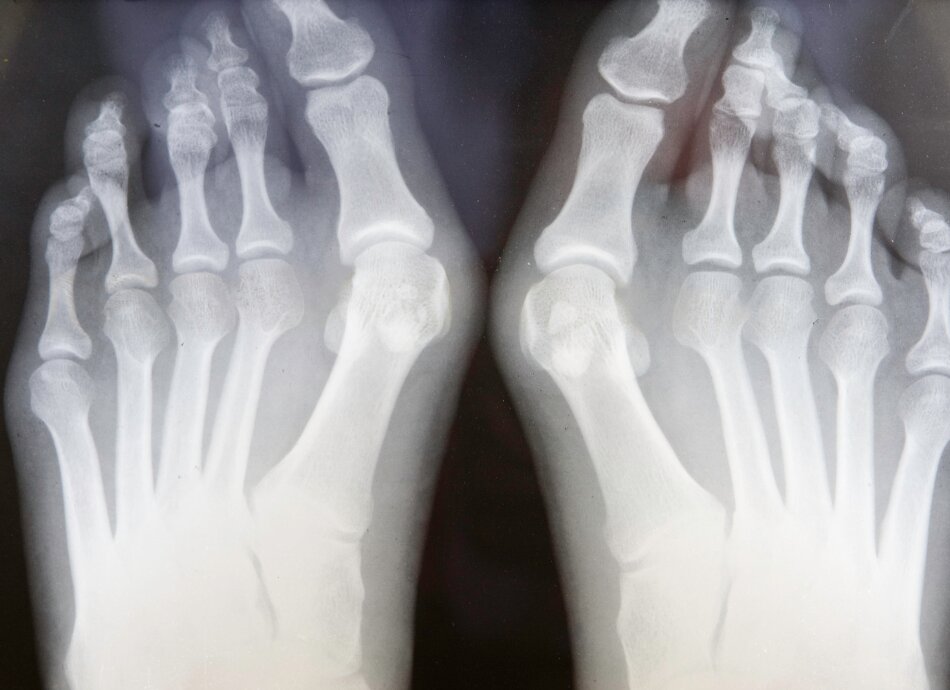A bunion happens when the bones of your big toe joint get out of line. This makes your big toe lean towards your second toe. Your big toe joint then sticks out more and rubs against the inside of your shoes. This can damage the joint and the skin around it, causing it to become swollen and painful.
The exact cause of a bunion developing isn't clear, but there are a number of risk factors that may contribute. These include:
- genetics – if one of your parents has bunions, your risk is higher
- people born with abnormal foot shape, such as flat feet or inward-rolling feet
- foot injuries
- wearing tight, high-heeled or narrow shoes – this is why bunions are more common in women or people who do activities such as ballet
- certain type of arthritis such as rheumatoid arthritis and gout
- other health conditions such as cerebral palsy and Marfan syndrome.

Image: Shutterstock






